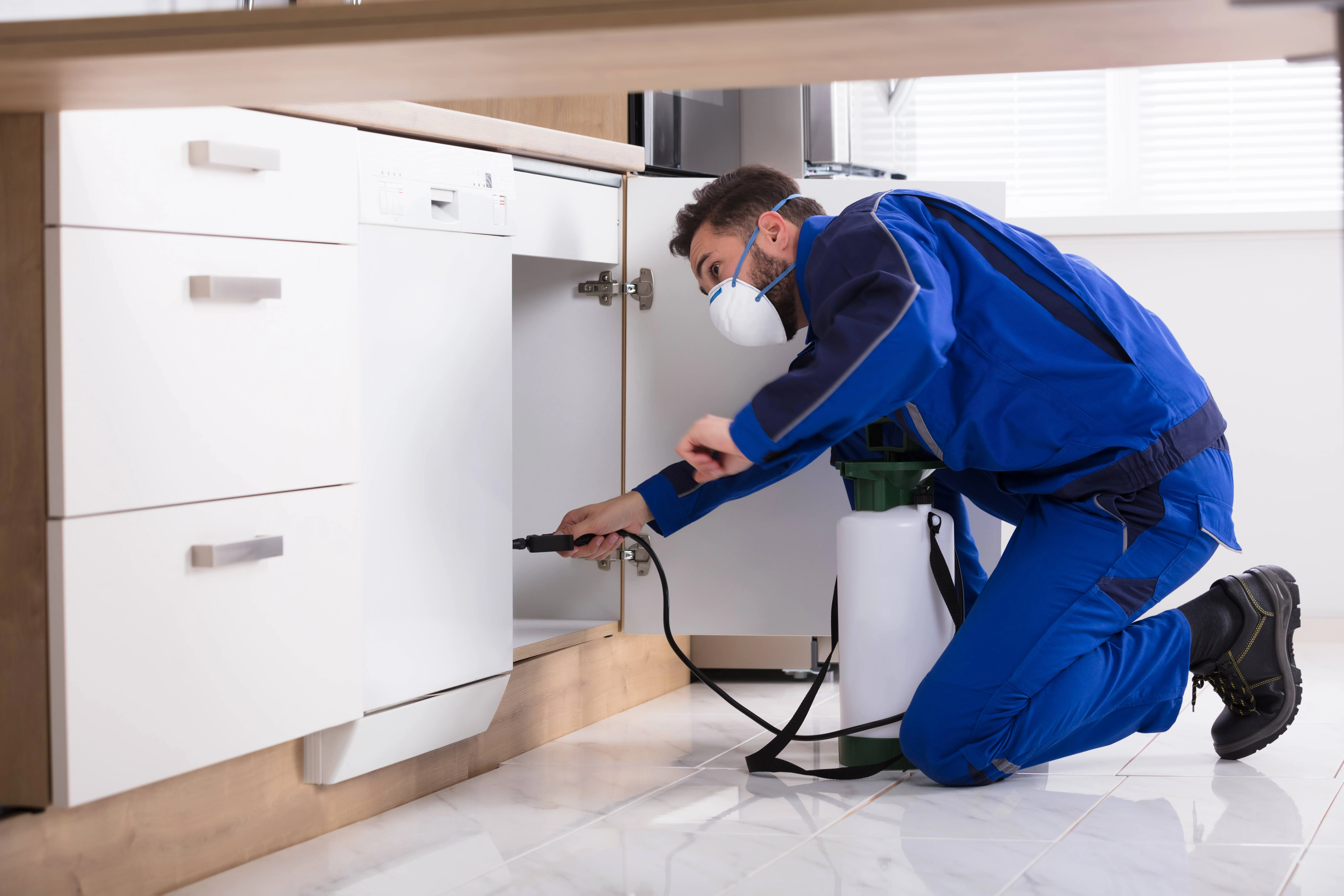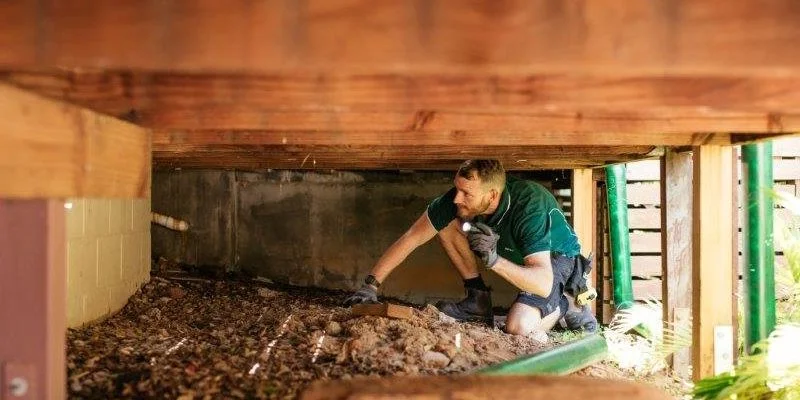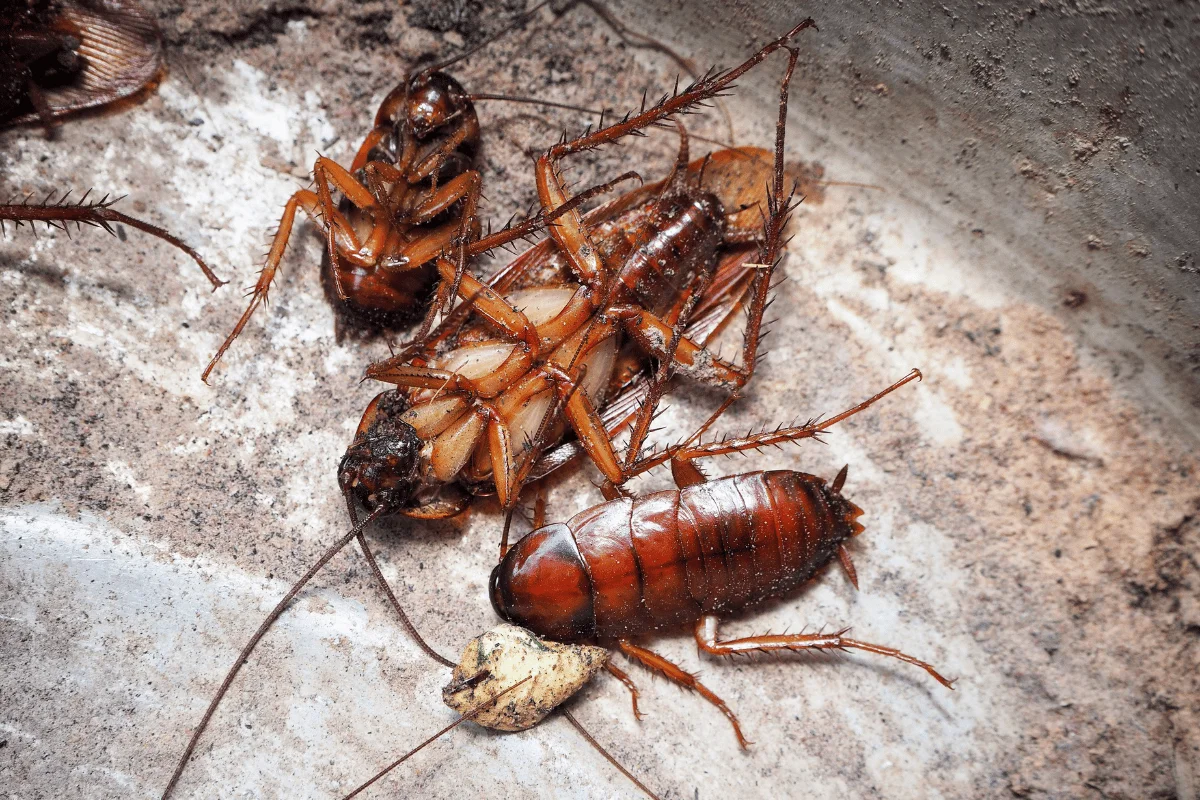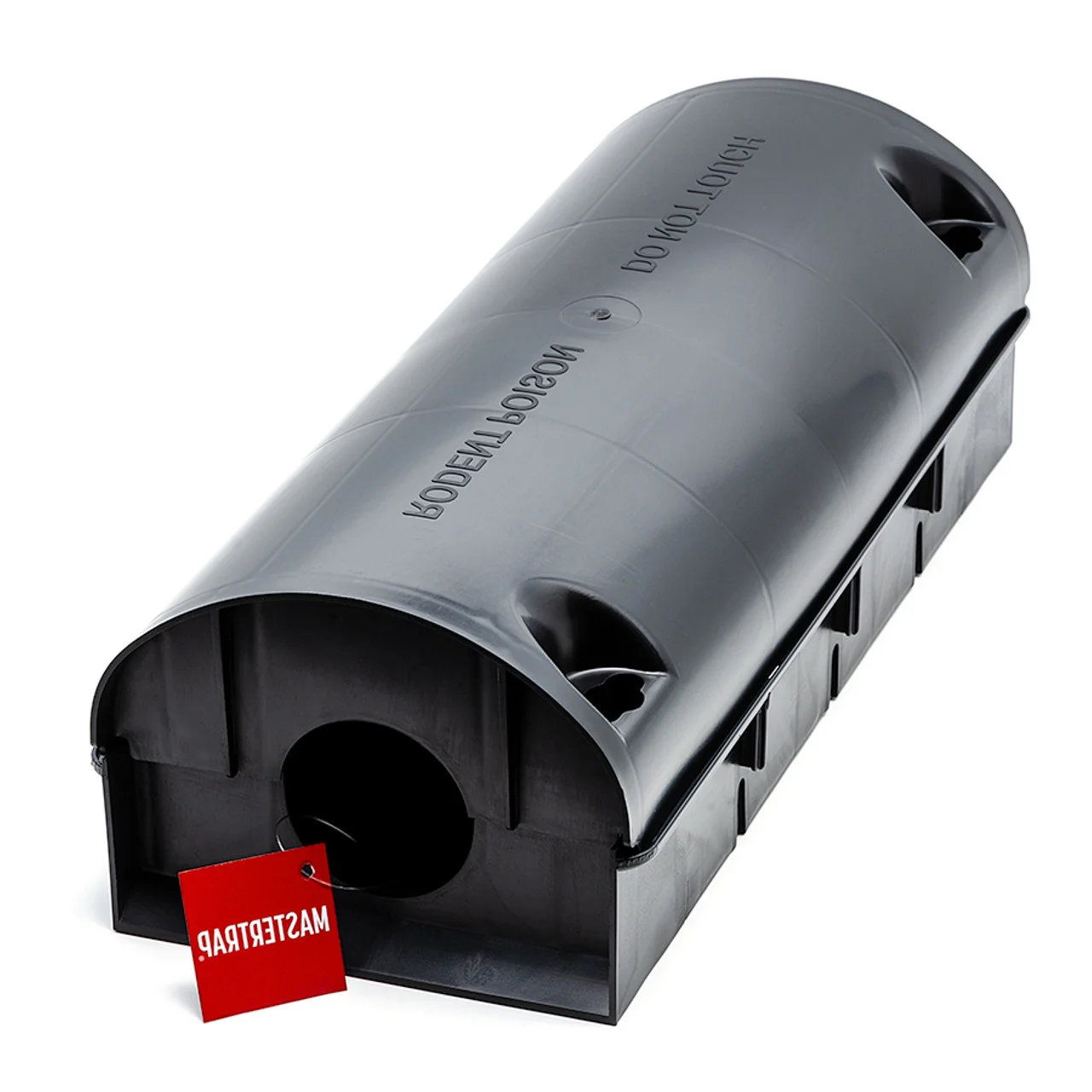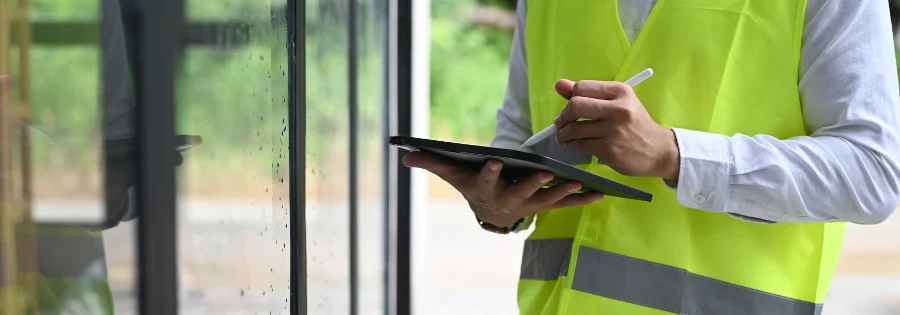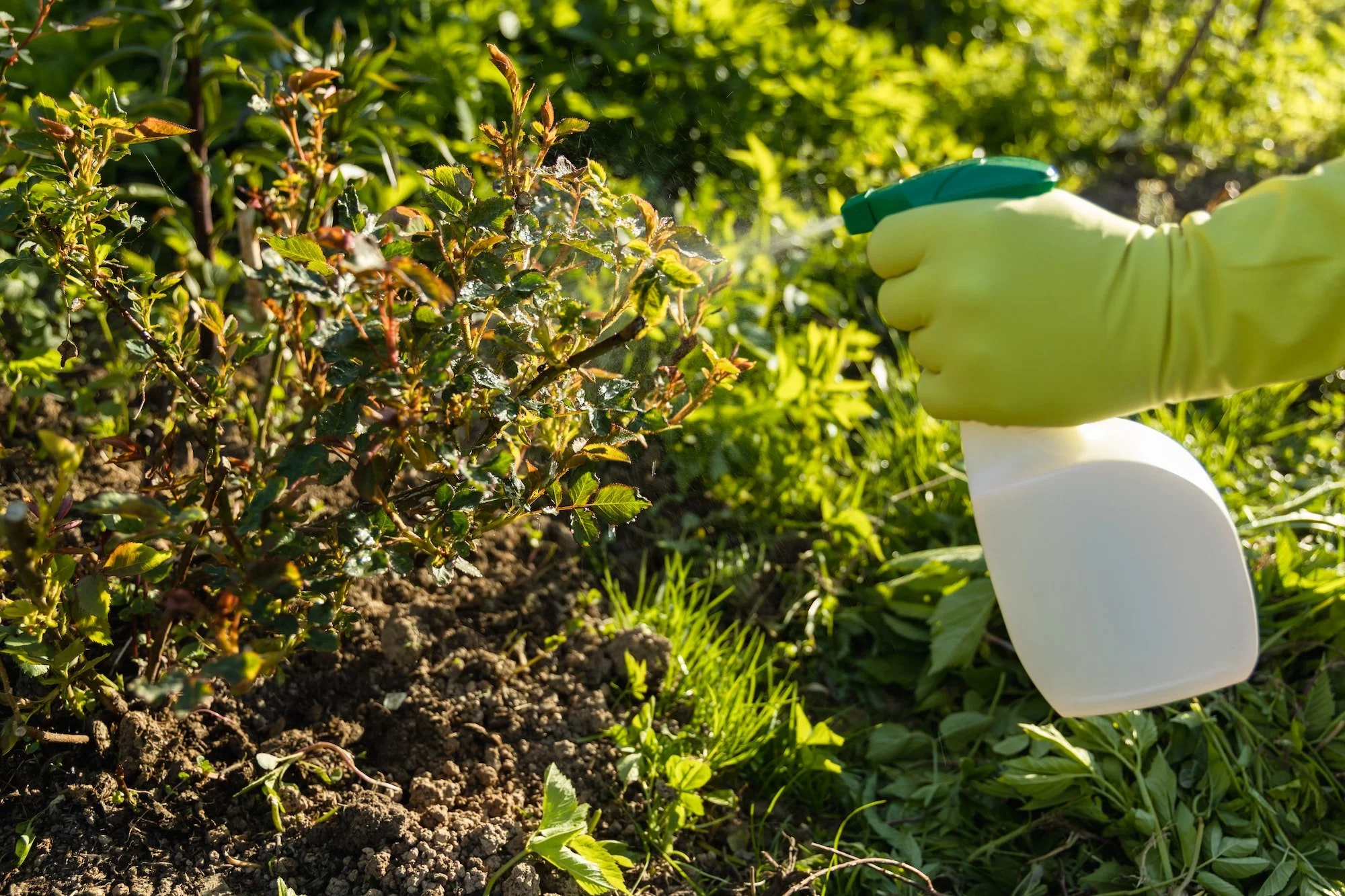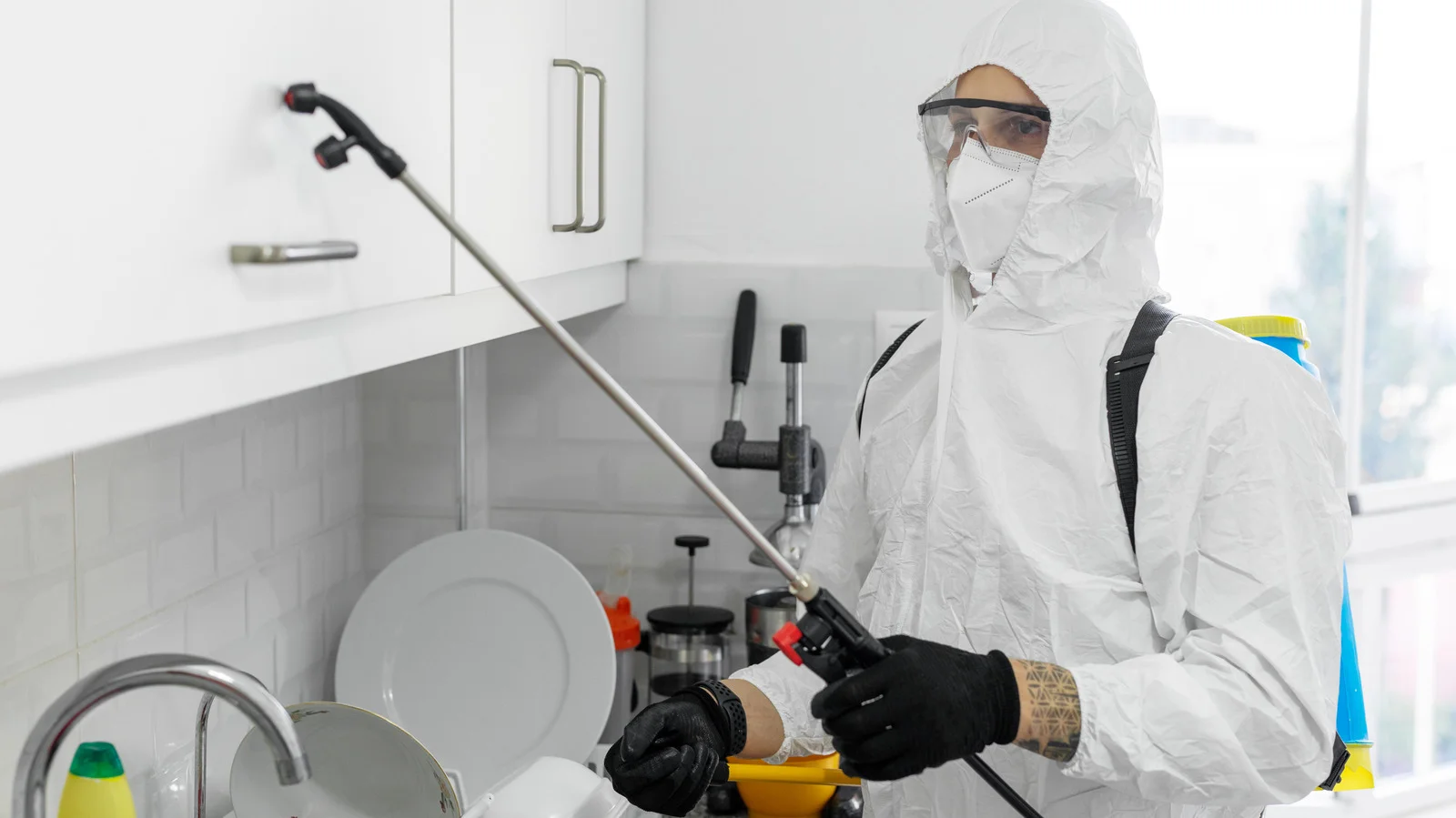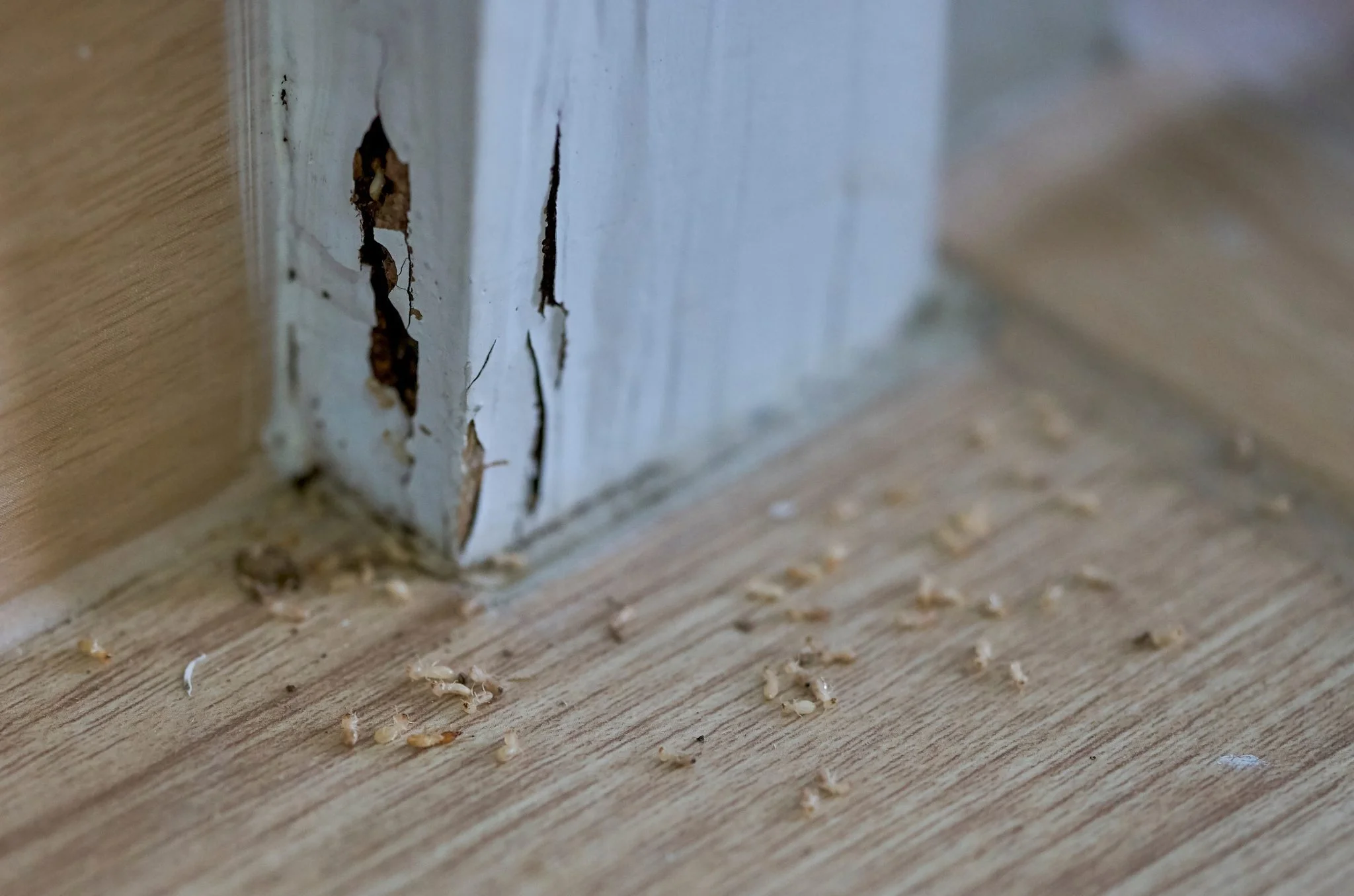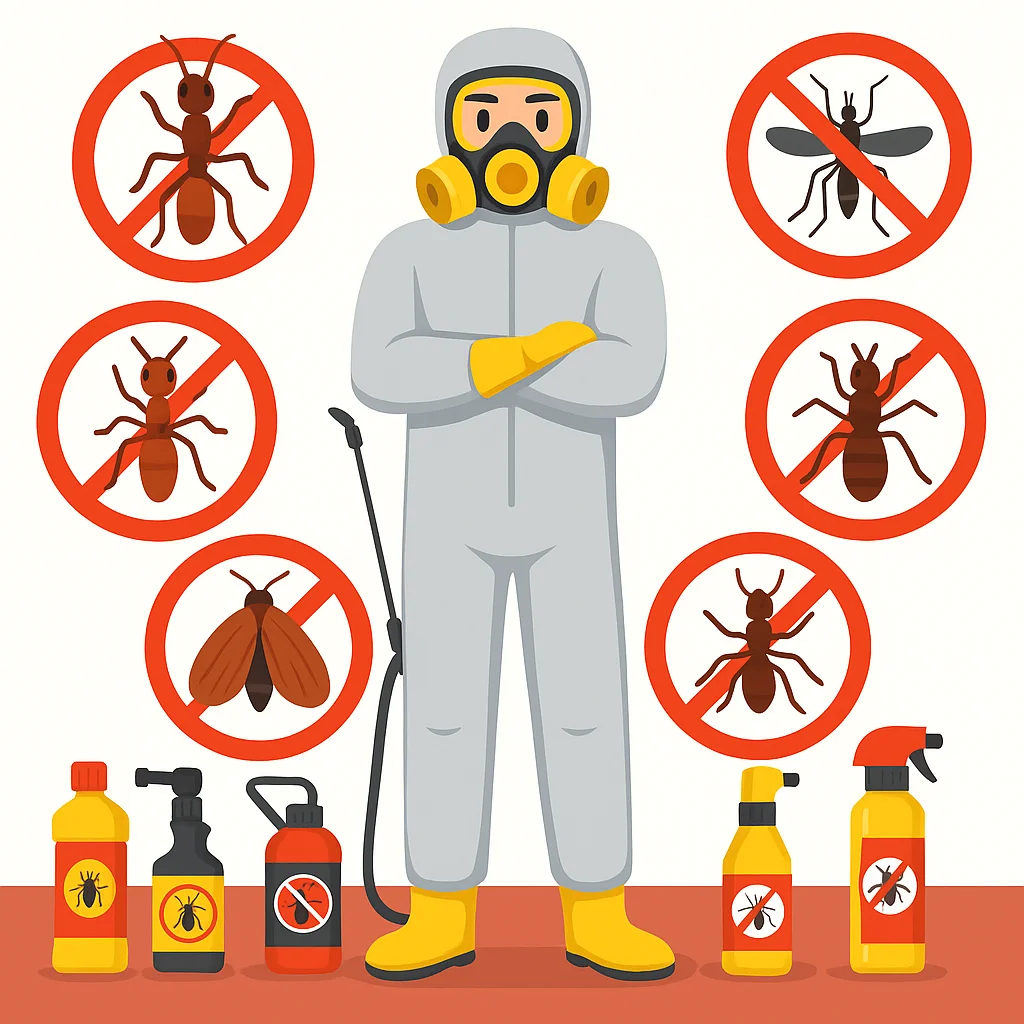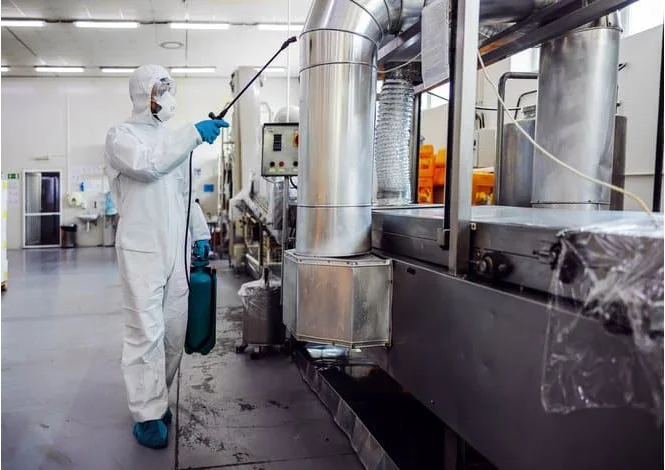Condominium communities present unique pest control challenges that
require specialized management approaches balancing individual homeowner
needs with community-wide protection strategies. Unlike rental properties,
condos involve homeowner associations, individual property ownership, and
shared responsibility for common areas, creating complex coordination
requirements for effective pest management. From termites threatening
structural integrity to cockroaches spreading between connected units,
condo pest control demands comprehensive programs that protect
both individual investments and community property values.
Successful condominium pest management requires collaboration between
homeowner associations, individual owners, and professional exterminators
who understand the legal, financial, and practical complexities of condo
ownership. Effective programs combine proactive community-wide prevention
with responsive individual unit protection to maintain pest-free environments
that preserve property values and homeowner satisfaction. In this comprehensive
guide, we'll explore proven strategies for protecting condominium communities
using eco-friendly pest solutions that respect both homeowner autonomy
and community standards.
Protecting your condominium community from pest issues that affect property
values? Our condo specialists provide emergency pest control
24/7 and comprehensive
residential pest protection programs designed for homeowner associations.
Get community-wide solutions now!
Unique Pest Control Challenges in Condominium Communities
Condominium communities face distinct pest management challenges that
differ from both single-family homes and rental apartments. Understanding
these complexities is essential for effective condo pest control:
-
Shared ownership responsibilities Condominium communities involve
complex ownership structures where individual units are privately owned
while common areas, building exteriors, and infrastructure are shared
community property managed by homeowner associations.
-
Individual homeowner autonomy Unlike rental properties, condo
owners can make independent decisions about pest control in their units,
potentially creating inconsistencies that affect community-wide pest
management effectiveness.
-
Association budget constraints Homeowner associations must balance
pest control costs with other community maintenance needs while obtaining
approval from homeowner boards for major pest management expenditures.
-
Legal liability considerations Associations must navigate legal
responsibilities for pest control in common areas while avoiding
liability for individual unit problems that could spread to affect
the broader community.
-
Varied homeowner cooperation levels Some owners may be highly
engaged in community pest prevention while others may not participate
in coordinated efforts, creating vulnerabilities that affect everyone.
-
Property value protection Pest problems can significantly impact
individual property values and community marketability, making effective
pest management crucial for protecting homeowner investments.
These factors make community-wide pest prevention strategies essential
for condominium communities. Successful programs address both association
responsibilities and individual homeowner needs while maintaining the
community standards that protect everyone's investment.
Homeowner Association Pest Management Programs
Professional consultation with condominium association board
Effective condominium pest management begins with comprehensive
professional pest control service programs designed specifically
for homeowner associations. These programs address the unique governance,
financial, and legal considerations that affect condo communities
while providing the expertise needed to protect shared property
and individual unit values.
Professional association programs combine community-wide prevention
strategies with individual homeowner support services, creating
comprehensive protection that respects ownership boundaries while
maintaining effective pest management throughout the entire community.
Association Responsibility Areas
-
Common area management Lobbies, hallways, elevators, laundry
facilities, fitness centers, pools, and community rooms require
regular pest prevention and treatment as part of association maintenance
responsibilities.
-
Building exterior protection Perimeter treatments, landscaped
areas, parking structures, and building envelope maintenance help
prevent pest entry into the community from outside sources.
-
Structural pest management Termite protection, foundation
treatments, and building infrastructure pest control protect the
community's shared structural investments.
-
Preventive maintenance coordination Associations coordinate
moisture control, exclusion work, and sanitation practices that
support community-wide pest prevention efforts.
Board Governance and Decision Making
Professional pest control services work closely with homeowner association
boards to develop policies, budgets, and procedures that address pest
management needs while complying with association bylaws and state
regulations governing condo communities.
Budget Planning and Cost Management
Association pest management programs include detailed budget planning
that helps boards understand costs, plan for preventive maintenance,
and prepare for potential emergency situations that could require
special assessments or reserve fund usage.
Common Pests in Condominium Communities
Condominium environments support specific pest populations that can
affect both individual units and community property values. Understanding
these common condo pests is crucial for developing effective protection
strategies:
Termites
Comprehensive termite inspection of condominium structure
Termites pose the greatest threat to condominium communities due
to their potential for causing extensive structural damage that
affects entire buildings and multiple homeowner investments simultaneously.
Subterranean termites commonly attack foundation areas, while
drywood termites can infest wooden structural elements throughout
multi-story buildings.
Professional termite inspection programs for condominiums
include comprehensive building assessments, ongoing monitoring
systems, and preventive treatment programs that protect the
community's shared structural investments while providing
individual unit protection.
Cockroaches
Professional cockroach control in condo building common areas
German cockroaches are persistent problems in condominium communities,
especially in buildings with shared walls and utility connections
that allow easy movement between units. These prolific breeders
can establish large populations in wall voids and spread throughout
buildings via plumbing chases and electrical conduits.
Cockroach extermination in condominiums requires coordinated
community-wide approaches because individual unit treatments often
fail when cockroaches simply relocate to adjacent areas through
shared building infrastructure.
Rodents
Strategic rodent control program in condominium complex
House mice and Norway rats commonly infest condominium communities,
using building infrastructure, storage areas, and common spaces
as travel routes and nesting sites. Parking garages, storage
lockers, and utility areas provide ideal harborage while units
offer food and water sources.
Effective rodent control using rat bait stations and
comprehensive exclusion work protects both individual units and
community areas through strategic placement and ongoing monitoring
throughout the condominium property.
Bed Bugs
Bed bugs can spread through condominium communities via shared walls,
common areas, and moving activities when homeowners relocate within
the community. High-end condo communities are particularly vulnerable
because residents often travel frequently, potentially introducing
bed bugs from hotels and other locations.
Ants
Various ant species commonly invade condominium properties, attracted
by landscaping, food sources in common areas, and individual unit
kitchens. Carpenter ants can damage wooden decks, balconies, and
structural elements, while sugar ants create trails throughout
buildings following food sources.
Flying Insects
Mosquitoes, wasps, and other flying insects can affect outdoor common
areas like pools, patios, and courtyards, impacting residents' enjoyment
of community amenities. Indoor flying insects may spread through
HVAC systems and common areas to affect multiple units.
Stored Product Pests
Pantry pests can spread between units through shared wall voids
and may also infest common area storage rooms, maintenance areas,
and community kitchens where they can affect multiple homeowners'
property and community functions.
Community-Wide Pest Protection Strategies
Comprehensive residential perimeter treatment programs for
condominium communities create protective barriers that benefit
all homeowners while addressing association responsibilities for
shared property maintenance. These community-wide strategies reduce
pest pressure on individual units while protecting property values
throughout the entire development.
Professional protection programs coordinate treatments across
multiple buildings, common areas, and landscaped spaces to create
integrated pest management systems that work more effectively
than individual homeowner efforts alone.
Integrated Community Protection
-
Perimeter defense systems Comprehensive treatment of building
exteriors, foundation areas, and landscaped perimeters creates
protective barriers that reduce pest pressure from outside sources
affecting the entire community.
-
Common area management Regular treatment and monitoring of
lobbies, hallways, amenity areas, and shared spaces prevents these
locations from becoming pest sources that affect individual units.
-
Infrastructure protection Treatment of utility areas, parking
structures, storage facilities, and mechanical spaces eliminates
pest highways and breeding sites within community infrastructure.
-
Landscape pest management Coordination of outdoor pest control
in common landscaped areas, courtyards, pool areas, and recreational
spaces maintains pest-free outdoor environments for all residents.
Preventive Maintenance Integration
Community pest protection programs integrate with regular association
maintenance activities including moisture control, structural repairs,
landscaping maintenance, and cleaning schedules to create comprehensive
prevention strategies that support long-term pest management goals.
Monitoring and Documentation
Professional services provide detailed monitoring and documentation
that helps associations track pest activity, treatment effectiveness,
and maintenance needs throughout the community property for informed
decision-making and budget planning.
Individual Homeowner Pest Protection
Individual condominium homeowners often need specialized pest
control services that complement community-wide programs while
addressing specific unit-level needs. Home pest inspection
services for condo owners focus on unit-specific vulnerabilities,
personal property protection, and coordination with community-wide
pest management efforts.
Professional services for individual homeowners respect property
ownership boundaries while ensuring that unit-level treatments
support overall community pest management goals and don't create
problems for neighboring units.
Unit-Specific Protection Services
-
Interior pest prevention Kitchen and bathroom treatments,
crack-and-crevice applications, and exclusion work protect individual
units while preventing pest establishment that could affect neighbors.
-
Personal property protection Specialized treatments protect
valuable furnishings, artwork, documents, and personal belongings
from pest damage within individual units.
-
Balcony and patio treatments Individual outdoor space protection
includes treatment of private balconies, patios, and terraces that
are homeowner responsibility areas.
-
Emergency response services Rapid response to individual unit
pest emergencies prevents problems from spreading to affect neighboring
units and community areas.
Coordination with Community Programs
Individual homeowner services coordinate with association-wide pest
management programs to ensure consistent treatment approaches, prevent
pest displacement between units, and maintain community standards
for pest prevention and property maintenance.
Homeowner Education and Support
Professional services include education about pest prevention practices,
early detection techniques, and proper coordination with association
pest management efforts to help homeowners protect their investments
while supporting community-wide prevention goals.
Protect your condominium investment and community property values with
professional pest management. From association-wide residential pest protection
to individual homeowner services, we keep your community pest-free –
schedule your community assessment today!
Eco-Friendly Pest Control for Condominium Communities
Condominium communities often include environmentally conscious
homeowners who prefer environmentally friendly pest control
approaches that protect both their families and the broader community
environment. Green pest management programs address these concerns
while maintaining effective pest control throughout the community.
Eco-friendly pest management in condominiums emphasizes prevention,
targeted applications, and low-impact treatments that maintain
pest-free environments without compromising resident health,
pet safety, or environmental quality in shared living communities.
Community Environmental Responsibility
Our condominium pest control specialists prioritize environmental
stewardship through eco-friendly treatment methods, sustainable
practices, and comprehensive communication about green pest management
options available to condo communities.
Green Community Programs
| Eco-Friendly Method |
Community Applications |
Environmental Benefits |
| Integrated Pest Management (IPM) |
Community-wide programs emphasizing prevention, monitoring,
and minimal chemical use throughout shared and private areas.
|
Reduces overall pesticide use while maintaining effective
control; sustainable approach for long-term community health.
|
| Biological Controls |
Natural predators and beneficial insects for landscaped
areas, courtyards, and outdoor community spaces.
|
Maintains ecological balance in community environments;
supports beneficial wildlife and pollinators.
|
| Physical Exclusion |
Sealing entry points, installing barriers, and modifying
building features to prevent pest access without chemicals.
|
Permanent pest prevention with zero environmental impact;
improves building efficiency and sustainability.
|
| Heat Treatments |
Non-chemical pest elimination for individual units and
common areas without chemical residues or environmental impact.
|
Zero pesticide use; no environmental contamination or
impact on air and water quality.
|
| Botanical Treatments |
Plant-based pest control products for sensitive areas
including community gardens and children's play areas.
|
Natural, biodegradable treatments that don't persist
in the environment or affect non-target species.
|
Sustainable Community Practices
Green pest management programs include community education about
sustainable practices, native landscaping that reduces pest pressure,
and waste management strategies that support overall environmental
goals while maintaining effective pest prevention.
HOA Governance and Pest Management Policies
Professional consultation with condominium association board
Successful condominium pest management requires clear governance
policies and procedures that define responsibilities, establish
standards, and coordinate activities between associations and
individual homeowners. Exterminator business partnerships
with HOA boards help develop comprehensive policies that protect
community interests while respecting homeowner rights.
Professional services help associations navigate the legal and
practical complexities of pest management in condominium communities,
including liability issues, cost allocation, and coordination
between community-wide and individual homeowner responsibilities.
Policy Development Support
-
Responsibility definitions Clear policies defining association
versus individual homeowner responsibilities for pest control in
different areas and situations help prevent disputes and ensure
comprehensive coverage.
-
Treatment standards Community standards for pest control
methods, notification procedures, and cooperation requirements
ensure consistent approaches that benefit all homeowners.
-
Emergency procedures Established protocols for pest emergencies
enable rapid response while protecting association liability and
ensuring appropriate cost allocation.
-
Budget planning guidelines Professional guidance helps boards
develop realistic budgets, plan for preventive maintenance, and
prepare for potential pest-related expenses.
Legal Compliance Support
Professional pest control services help associations comply with
state regulations governing condominium operations, environmental
protection requirements, and liability considerations related to
pest management in shared ownership communities.
Documentation and Reporting
Comprehensive documentation supports association governance by providing
detailed records of pest management activities, costs, and effectiveness
for board decision-making, homeowner communications, and legal protection.
Protecting Condominium Property Values
Pest problems can significantly impact condominium property values,
affecting both individual unit values and overall community marketability.
Professional pest management programs protect homeowner investments
by preventing termite damage and other pest-related property
damage that can reduce values and create costly repair obligations.
Proactive pest management demonstrates community commitment to
property maintenance and provides documentation that supports
property values during sales, refinancing, and insurance evaluations
throughout the condominium community.
Investment Protection Strategies
-
Preventive maintenance programs Regular pest prevention
activities protect structural integrity and prevent costly damage
that could affect property values and require special assessments.
-
Documentation for property sales Professional pest management
records support property values during individual unit sales and
provide reassurance to potential buyers about community maintenance standards.
-
Insurance support Comprehensive pest management documentation
may help reduce insurance costs and provides protection against
claims related to pest damage or negligent maintenance.
-
Community reputation management Effective pest control maintains
the community's reputation and marketability, supporting property
values throughout the development.
Market Value Maintenance
Professional pest management helps maintain competitive market positioning
by ensuring that condominium communities remain attractive to potential
buyers and retain their value relative to other properties in the
local market.
Emergency Pest Response for Condominium Communities
Condominium communities require specialized emergency response
capabilities that address both association responsibilities and
individual homeowner needs during pest crises. Emergency pest control visit
services for condos include rapid assessment, immediate containment,
and coordination with association management to minimize community
impact while protecting individual property interests.
Emergency protocols for condominium communities balance the need
for rapid response with proper governance procedures, liability
considerations, and coordination between affected homeowners and
association management responsibilities.
Community Emergency Protocols
-
24/7 emergency availability Round-the-clock response capabilities
ensure that pest emergencies can be addressed immediately regardless
of when they occur, preventing spread throughout the community.
-
Association coordination Emergency response includes immediate
notification and coordination with association management to ensure
proper authorization and documentation of emergency treatments.
-
Multi-unit assessment Emergency response includes evaluation
of adjacent units and common areas to determine the extent of pest
problems and prevent further spread throughout the community.
-
Liability protection Emergency procedures include proper
documentation and coordination to protect both associations and
individual homeowners from liability related to pest emergencies.
Common Emergency Situations
Typical emergency situations in condominium communities include termite
swarms that indicate structural threats, bed bug discoveries requiring
immediate containment, wasp nests posing safety risks in common areas,
and any pest situation that threatens community safety or property values.
Coordinated Response Procedures
Emergency response procedures coordinate between individual homeowners,
association management, and professional pest control teams to ensure
rapid, effective treatment while maintaining proper governance and
documentation throughout the emergency response process.
Advanced Monitoring Technology for Condominium Communities
Modern condominium communities can benefit from sophisticated
monitoring technology that provides early warning of pest problems
while respecting individual homeowner privacy and property rights.
Strategic pest prevention using advanced monitoring systems
helps associations make informed decisions about pest management
investments and timing.
Technology integration in condominium pest management focuses
on common areas and community infrastructure while providing
optional services for individual homeowners who choose to participate
in enhanced monitoring programs.
Community Monitoring Systems
-
Common area monitoring Digital monitoring devices in lobbies,
amenity areas, storage rooms, and mechanical spaces provide real-time
data on pest activity in association-managed areas.
-
Perimeter monitoring networks Exterior monitoring stations
around community perimeters detect pest pressure from outside
sources and provide early warning of potential community-wide issues.
-
Environmental monitoring Sensors tracking temperature, humidity,
and other environmental factors help predict pest pressure and
optimize treatment timing for maximum effectiveness.
-
Predictive analytics Data analysis helps associations understand
pest patterns, plan preventive treatments, and budget for pest
management needs based on actual community conditions.
Individual Homeowner Options
Optional monitoring services allow individual homeowners to participate
in enhanced pest detection programs that coordinate with community-wide
monitoring while providing additional protection for individual units
and personal property.
Association Decision Support
Monitoring data provides associations with objective information
about pest pressure, treatment effectiveness, and maintenance needs
to support informed decision-making about pest management investments
and policy development.
Seasonal Pest Management for Condominium Communities
Spring (March-May)
- Termite swarm season requires monitoring
- Ant activity increases in landscaped areas
- Flying insects emerge around common areas
- Balcony and patio pest activity begins
Focus: Comprehensive exterior treatments and
termite monitoring throughout the community property.
Summer (June-August)
- Peak outdoor pest activity in amenity areas
- Increased pressure on air-conditioned units
- Pool and recreation area pest management
- Landscaping pest pressure intensifies
Focus: Intensive outdoor area management and
community amenity protection programs.
Fall (September-November)
- Pest migration indoors for winter shelter
- Increased activity in storage areas
- Rodent activity intensifies in parking areas
- Preparation for heating season pest movement
Focus: Exclusion work and preparation for winter
pest management throughout the community.
Winter (December-February)
- Concentrated indoor pest activity
- Heating system pest distribution potential
- Focus on interior common areas
- Planning for spring pest emergence
Focus: Interior common area treatments and
preparation for spring community pest prevention.
Homeowner Education and Community Involvement
Community education session for condominium homeowners
Successful condominium pest management relies on educated, engaged
homeowners who understand their role in community-wide prevention
efforts. Family-owned exterminator services often excel
at building personal relationships with homeowners and providing
education that creates collaborative approaches to community pest
prevention and property value protection.
Comprehensive education programs help homeowners understand the
connection between individual actions and community pest management
success while providing practical guidance for protecting their
personal investments and supporting association goals.
Community Education Programs
-
New homeowner orientations All new residents receive comprehensive
pest prevention information as part of their community introduction,
including association policies and individual responsibilities.
-
Seasonal community workshops Regular educational meetings
provide timely advice about seasonal pest prevention and allow
homeowners to ask questions about community pest management efforts.
-
Board education and training Association board members receive
specialized training about pest management governance, legal responsibilities,
and budget planning to support informed decision-making.
-
Emergency response training Homeowners learn proper procedures
for reporting pest emergencies and coordinating with association
management and professional pest control services.
Individual Homeowner Best Practices
Education covers proper food storage, moisture control, cleanliness
standards, and maintenance practices that support both individual
unit protection and community-wide pest prevention goals while
respecting property ownership boundaries.
Community Communication Tools
Professional services provide associations with newsletters, website
content, and communication materials that help maintain ongoing
homeowner awareness about pest prevention and community pest management
activities throughout the year.
Cost-Effective Pest Management for Condominium Associations
Condominium associations must balance effective pest control with
responsible budget management and homeowner satisfaction. Commercial pest control service
approaches for condo communities emphasize cost-effective strategies
that provide maximum protection value while maintaining transparent
communication about costs and benefits to homeowner association boards.
Professional programs help associations understand the true cost
of pest management versus the potential costs of pest damage,
property value loss, and emergency treatments that result from
inadequate prevention efforts.
Budget Planning and Cost Control
-
Predictable annual costs Comprehensive service agreements
provide associations with predictable pest management costs that
support accurate budget planning and avoid surprise expenses.
-
Preventive cost savings Regular maintenance and monitoring
prevent expensive emergency treatments and property damage that
can result in special assessments or reserve fund depletion.
-
Community-wide efficiency Association-wide programs provide
economies of scale that reduce per-unit costs compared to individual
homeowner pest control arrangements.
-
Property value protection Effective pest management maintains
property values and marketability, protecting all homeowners'
investments and supporting community financial stability.
Flexible Service Options
Professional services offer flexible program options that can be
customized to fit association budgets and needs, from basic common
area protection to comprehensive community-wide programs that include
individual homeowner support services.
Return on Investment Analysis
Detailed cost-benefit analysis helps associations understand how
pest management investments protect property values, reduce maintenance
costs, and support community goals while providing transparent
justification for pest control expenditures.
Condominium Community Success Stories
"PestControl100 helped our 150-unit condominium community eliminate
ongoing pest complaints and establish a comprehensive prevention
program that has maintained property values and homeowner satisfaction
for over four years."
- Robert K., HOA Board President
★★★★★
"The termite monitoring program discovered early activity that
could have caused major structural damage. The professional response
protected our community investment and prevented what could have
been a costly special assessment."
- Linda M., Property Manager
★★★★★
"As condominium owners, we appreciate the coordinated approach
that protects our individual unit while supporting community-wide
pest prevention. The education program helped us understand our
role in maintaining our investment."
- Michael and Susan T., Homeowners
★★★★★
Legal Compliance and Risk Management
Condominium associations face unique legal responsibilities related
to pest control that require careful attention to compliance with
state regulations, environmental protection laws, and homeowner
association governance requirements.
Association Legal Responsibilities
-
Common area maintenance Associations have legal obligations
to maintain common areas including pest control responsibilities
that protect all homeowners' property interests.
-
Structural protection Associations must protect shared structural
elements from pest damage including termite prevention and treatment
of building infrastructure.
-
Environmental compliance All pest control activities must
comply with federal and state environmental regulations governing
pesticide use in residential communities.
-
Documentation requirements Proper documentation of pest
management activities protects associations from liability and
supports compliance with regulatory requirements.
Risk Management
Professional pest control services help associations manage risks
related to pest damage, liability claims, and regulatory compliance
through comprehensive programs and proper documentation that support
association governance and protection.
Insurance Coordination
Pest management documentation and preventive maintenance records
support insurance coverage and may help reduce premiums while providing
protection against claims related to pest damage or negligent maintenance.
Frequently Asked Questions
What pest control responsibilities do condominium associations have versus individual homeowners?
Generally, condominium associations are responsible for pest
control in common areas, building exteriors, shared infrastructure,
and structural protection, while individual homeowners are
responsible for pest control within their units. However, specific
responsibilities vary by association bylaws and state regulations.
Professional services help clarify these boundaries and ensure
comprehensive coverage that protects both association and individual
homeowner interests throughout the community.
How are pest control costs typically handled in condominium communities?
Association-wide pest control costs are typically included in
regular association fees or assessments, covering common areas
and community-wide prevention programs. Individual unit treatments
are usually the homeowner's responsibility unless the pest problem
originates from association-maintained areas. Some communities
choose comprehensive programs that include both association and
individual unit coverage for more effective community-wide protection
and cost efficiency.
Can individual homeowners choose their own pest control services in a condominium?
Individual homeowners typically can choose their own pest control
services for their units, but treatments must comply with association
policies and not interfere with community-wide pest management
efforts. Coordination with association programs is recommended
to ensure treatments don't create problems for neighboring units
or conflict with community pest prevention strategies. Many
homeowners find that participating in association-coordinated
programs provides better results and cost efficiency.
How do pest problems in one unit affect neighboring units in condominiums?
Pest problems can easily spread between condominium units through
shared walls, utility connections, and building infrastructure.
Cockroaches, bed bugs, and rodents commonly move between adjacent
units, making individual unit treatments less effective without
community-wide coordination. This interconnection makes community-wide
prevention and coordinated treatment approaches more effective
than isolated individual unit treatments for maintaining pest-free
conditions throughout the condominium community.
What should a condominium association do if there's a major pest emergency?
Condominium associations should have established emergency procedures
that include immediate notification of professional pest control
services, assessment of affected areas, and coordination with
homeowners as needed. Emergency response should follow association
bylaws for expenditure authorization while addressing immediate
threats to community health and property. Professional emergency
services can provide rapid assessment and treatment while helping
associations navigate governance and liability considerations during
pest emergencies.
Protect your condominium community investment with professional pest
management that understands HOA governance and homeowner needs. Trust
PestControl100 for comprehensive condo pest control solutions –
contact us today for expert community protection!

